
Hemistola chrysoprasaria, the small emerald, is a moth of the family Geometridae. The species can be found in all Europe including the Iberian Peninsula and Russia East to the Ural Mountains, North Africa, Asia Minor, Transcaucasia and the mountains of Eastern Asia, and China Tian Shan

Asthena is a genus of moths in the family Geometridae.

Cleora is a genus of moths in the family Geometridae. The genus was erected by John Curtis in 1825.

Comostola is a genus of moths in the family Geometridae erected by Edward Meyrick in 1888. They are found primarily in Asia and Australia.

Derambila is a genus of moths in the family Geometridae first described by Francis Walker in 1863.

Alcis is a genus of moths in the family Geometridae described by John Curtis in 1826.
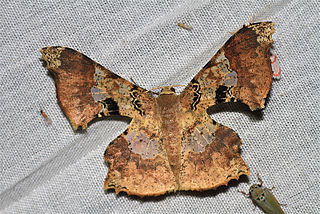
Krananda is a genus of moths in the family Geometridae described by Frederic Moore in 1868.
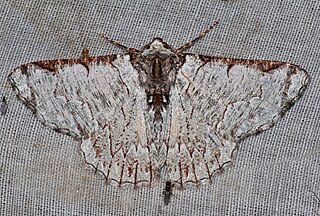
Lophophelma is a genus of moths in the family Geometridae described by Prout in 1912.

Poecilasthena is a genus of moths in the family Geometridae.

Scopula is a genus of moths in the family Geometridae described by Franz von Paula Schrank in 1802.

Somatina is a genus of moths in the family Geometridae first described by Achille Guenée in 1858.
Syncosmia is a genus of moths in the family Geometridae first described by Warren in 1897.

Krananda semihyalina is a moth of the family Geometridae first described by Frederic Moore in 1868. It is found from the Oriental tropics to Japan, Sulawesi and the southern Moluccas.

Poecilasthena subpurpureata is a species of moth of the family Geometridae. It was first described by Francis Walker in 1863 and it is endemic to New Zealand. A synomic species, Astheniodes polycymaria, has a holotype that was recorded by George Hampson as being from India, which, as Dayong Xue and Malcolm J. Scoble point out in their paper, would be a very strange distribution pattern. Louis Beethoven Prout reasonably calls this an error in his 1926 paper.
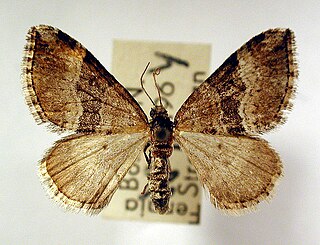
Perizoma bifaciata, the barred rivulet, is a moth in the family of geometer moths (Geometridae). It was first described by Adrian Hardy Haworth in 1809.
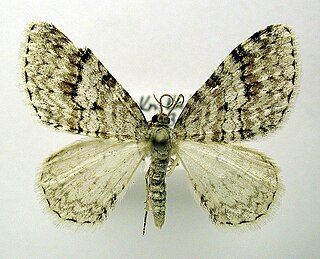
Venusia cambrica, the Welsh wave, is a moth of the family Geometridae. It is found in Europe, western and central Siberia, Altai, Transbaikalia, the Russian Far East, the Korean Peninsula, Japan and in North America, where it can be found across Canada from Newfoundland and Labrador to British Columbia, south in the west to California, south in the east to Georgia.
Louis Beethoven Prout (1864–1943) was an English entomologist and musicologist.
Neromia propinquilinea is a moth of the family Geometridae first described by Louis Beethoven Prout in 1920. It is found in Sénégal.
Cleora tora is a moth of the family Geometridae. It is known from northern Madagascar.
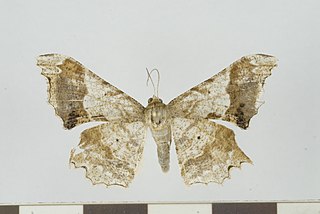
Krananda oliveomarginata is a moth in the family Geometridae first described by Charles Swinhoe in 1894. It is found in the north-eastern Himalayas, China, Taiwan, northern Vietnam, Thailand and on Peninsular Malaysia, Sumatra and Borneo.
















